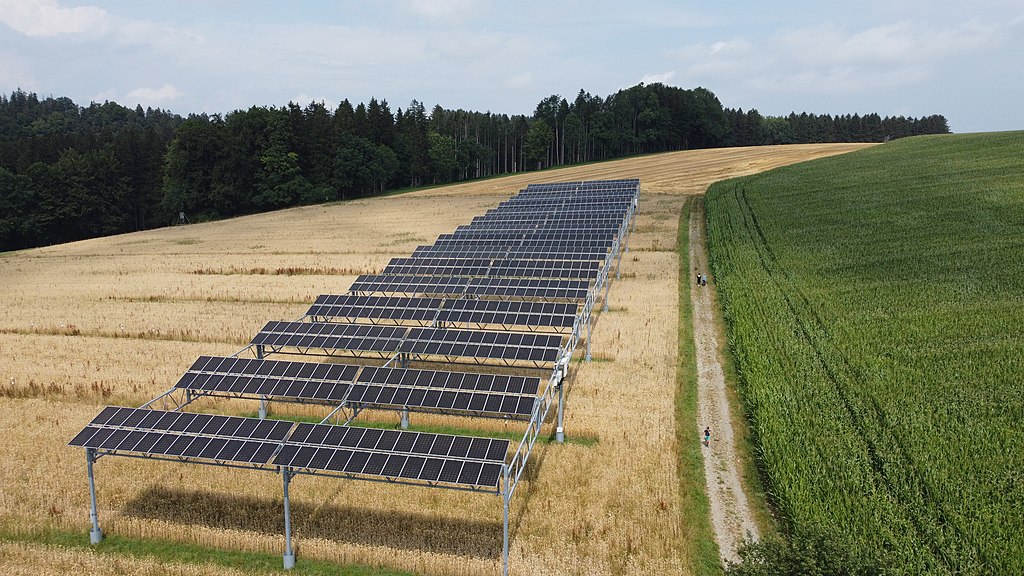Agrophotovoltaics (agri PV)

Agrophotovoltaics (agri PV) is the term used to describe specially developed photovoltaic systems that are installed above or on agricultural land and that, through specific technical modifications, enable agricultural or arable production to continue underneath or in conjunction with them. This combined use of agricultural land for generating energy and growing food can result in agrophotovoltaics boosting land productivity.
Whereas the electricity yield per area rises as the density of the photovoltaic modules in operation increases, the amount of light available for plants drops, which, in turn, may result in fluctuations in agricultural yields. These may decrease if the amount of light available is the limiting factor for plant growth, but also rise if the particular limiting factor is availability of water. Furthermore, the elevation of agri PV systems results in losses of land, which can vary depending on the system design and what is being farmed underneath. This can amount to 10-15% according to DIN SPEC 91434 “Agriphotovoltaic systems – requirements for primary agricultural use”. Consequently, great potential for the rapid expansion of photovoltaic systems in agriculture is offset by the possible reduction in agricultural output.
Finding ways to expand agri PV in such a way that as many synergies with agricultural production as possible can be achieved without leading to a critical reduction in the amount of arable land and production volumes is therefore important – protection against weather extremes (e.g. hail, drought) is a prime example of this.
